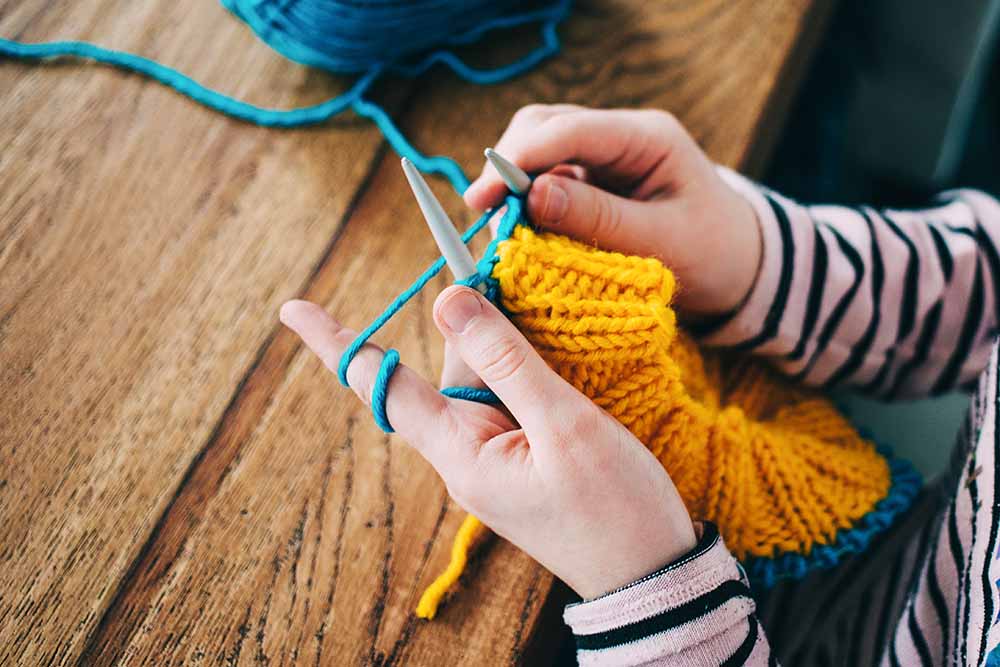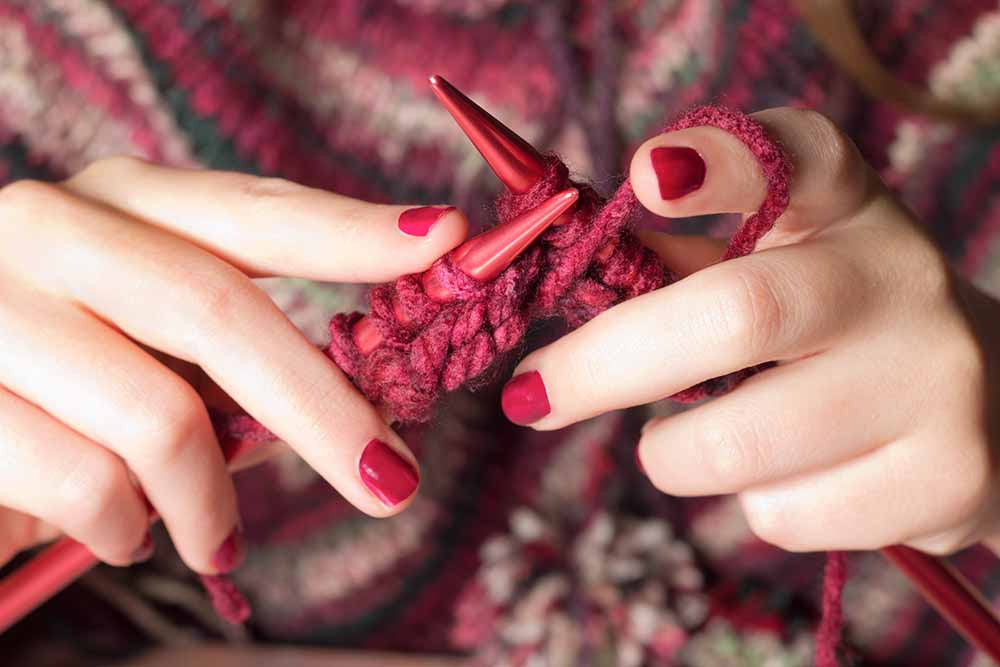Knitting is a captivating craft that allows you to create intricate and beautiful pieces using yarn and needles. Whether you're a beginner or experienced, knitting offers a rewarding way to express your creativity and produce unique handmade items.
Is It Difficult or Easy to Knit?
Knitting might seem intimidating at first, but with the right guidance and practice, it becomes an enjoyable and satisfying endeavour. The key lies in starting with simple projects and gradually building your skills.
Things Required for Knitting
To begin your knitting journey, you'll need basic materials: yarn, knitting needles, scissors and a tapestry needle. As a beginner, opt for medium-weight yarn and appropriately sized needles.

Step-by-Step Tutorial for Knitting
1. Casting On: Start by creating the foundation row, known as casting on. This sets up the number of stitches you'll be working with.
2. Knit Stitch: The fundamental knit stitch involves inserting the needle into the stitch, looping the yarn around, and pulling it through to create a new stitch.
3. Purl Stitch: The purl stitch adds texture and variation to your knitting. Insert the needle from right to left, bring the yarn to the front, and pull it through the stitch.
4. Knitting in Rows: Alternate between knit and purl stitches to create various patterns. This forms the basis of many knitting projects.
5. Binding Off: Once you've finished your project, bind off by knitting two stitches, then lifting the first stitch over the second. Continue this process until you have one stitch left, then cut the yarn and weave it through the last stitch.
Knitting Patterns
Explore a multitude of knitting patterns, from basic garter and stockinette to intricate lace and cables. As you gain confidence, experiment with different patterns to create unique textures and designs.
Knitting and Fashion
Knitting isn't just a craft; it's a form of wearable art. From cozy sweaters to stylish scarves, you can infuse your wardrobe with personalized and fashionable pieces that reflect your style.
History of Knitting
The origins of knitting date back centuries, with evidence of knitted garments found in various cultures around the world. From practical clothing to decorative items, knitting has evolved as both a functional and artistic craft.
Traditional Materials Used for Knitting
Historically, natural fibres like wool, cotton and silk were commonly used for knitting. These materials offer durability, warmth and a timeless aesthetic to knitted creations.
Tips for Fixing Knitting Mistakes
Mistakes are a natural part of knitting. If you drop a stitch, use a crochet hook to pick it up. For incorrect stitches, unravel the work carefully and correct the error. With patience, mistakes can be rectified seamlessly.

Knitting as a Therapeutic Art
Beyond the artistic output, knitting offers therapeutic benefits. The repetitive motions can reduce stress and anxiety, promoting mindfulness and relaxation. Engaging in knitting can be a form of self-care and a way to unwind.
Conclusion
As you embark on your knitting journey, remember that every stitch you create is a step towards mastering this wonderful craft. From basic stitches to intricate patterns, knitting opens the door to endless creativity and self-expression. So, pick up those needles, choose your favourite yarn, and let your imagination run wild.
FAQs
Where can I find beginner-friendly knitting patterns?
Websites like Ravelry and Pinterest offer a plethora of knitting patterns suitable for beginners.
How long does it take to learn knitting?
The learning curve varies, but with consistent practice, you can become comfortable with basic stitches within a few weeks.
Can I use synthetic yarn for knitting?
Yes, synthetic yarns are widely used for knitting. However, natural fibres like wool and cotton are also popular choices due to their texture and warmth.
What should I do if my knitting tension is too tight?
Relax your grip on the needles and yarn, and practice maintaining a consistent tension. Over time, your tension will become more even.
Are there knitting groups or communities I can join?
Yes, many local yarn shops and online platforms have knitting groups where you can connect with fellow enthusiasts, share ideas and seek guidance.